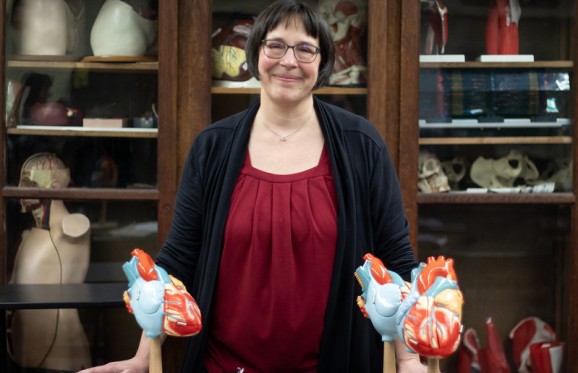Learning
Muskingum Biology Expands with Cutting-Edge DNA Sequencing Tools
Muskingum University’s biology program is getting a tech upgrade. New DNA sequencing equipment is being installed into the labs in early September in time for classes like Molecular Biology (BIO-375) and research-based courses (BIO-421/422) to dive into exciting new ways of collecting data. Professor of Biology Dr. Amy Santas broke down what this means for the department.
“I think it was around 2005 when we got our DNA sequencer. I arrived here in 2004 and that has served the purpose, but it is outdated as you can imagine. So, we had a donor ask if there was instrumentation that that would be helpful and that came to mind,” Amy said.
The new Quantitative PCR (qPCR) not only determines the amount of DNA was initially used, but it also has the ability to increase the amount of DNA. This is useful for studying bacteria, viruses, and species population. In the classroom it will be used for specific learning, like teaching DNA amplification and giving students hands-on training on how to use the state-of-the-art equipment.

“The advantage of qPCR is you can count the number of copies that are being made; it kind of gives you some relative understanding of how much DNA you started with in the beginning, which can be important if you’re looking at something that’s infectious like viruses or bacteria, or if you’re trying to understand how many of a certain species is present,” Amy explained.
Another piece of equipment that the department is looking forward to is the Oxford Nanopore DNA Sequencer. This is a next-gen sequencer capable of processing thousands of samples simultaneously, unlike the old machine which handled one sample at a time. Amy described how this will be used in collaboration with The Wilds, a nonprofit safari-style conservation center in Southeastern Ohio dedicated to protecting endangered species through research, education, and sustainable habitat preservation.
“There’s several different projects that are about health,” Santas said. “One is with the snakes; another one is looking at bats… we can swab their roosts and see if they have common diseases. One is the white-nose syndrome, and if that disease is present, then specific cleaning can be done to try to promote wild bat health.”
Thanks to the generosity of Dr. Craig '73 and Deborah '74 Anderson, this new equipment marks an exciting step forward for the Biology Department. Students will gain hands-on experience with advanced tools used in real-world research, preparing them for careers in science and medicine.
Amy is eager to see the technology not only enhance current courses but also spark new research opportunities and interdisciplinary collaborations. As the program grows, she hopes to expand its use across more classes.